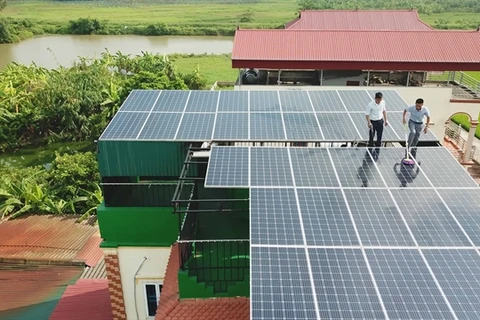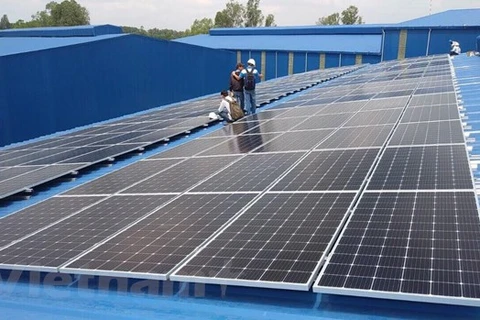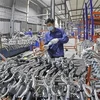Hanoi (VNS/VNA) - As smart energy plays an important role in smart urban areas, Vietnam plans to develop smarter, cleaner, greener and more sustainable energy resources for its cities, said experts at a recent summit in Hanoi.
Nguyen Cao Luc, Vice Chairman of the Government Office said: “Smart city development is the right direction and a closed smart energy development plays a very important role in the development.”
Attending the ASEAN Smart Cities Network High-Level Forum 2020 last week in Hanoi, Luc added: “Cities consume 70 percent of global energy and are also responsible for 70 percent of pollutant emissions. Therefore, moving towards a smarter, cleaner, greener and more sustainable city depends a lot on how we use energy in the cities.”
Per Resolution 55-NQ/ W on the national energy development up to 2045, economical and efficient use of energy and environmental protection must be considered an important national policy and the responsibility of all of society, said the deputy chairman.
Dang Hoang An, Deputy Minister of Industry and Trade, said: “By 2030, half of Vietnam's population will live in urban areas, which can cause huge problems for urban management economic structure, infrastructure and environmental protection.”
According to the Ministry of Construction, there are 833 urban centres including two special cities, 20 grade 1 cities and the rest grade 3 or grade 4 centres.
“We need to find solutions to solve the above problems to create a higher standard of living for its people,” An said:
“To have enough energy for cities, Vietnam needs smart energy as it could save more and better control energy supply and demand," he added.
Smart energy investment - long-term benefits
According to the World Energy Organisation, ASEAN exports some primary energies, but it will become an importer of energy in a very short time due to its rising population.
As a production country with more and more industrial zones and a possible importing country, An said Vietnam had to use energy efficiently.
John Rockhold, head of Power and Energy Working Group, Vietnam Business Forum, mentioned green energy efficiency in urban areas and economic zones.
“Investing in smart energy development will be expensive at first, but it will bring benefits in the long run. Specifically, industrial zones with a smart energy environment will increase competition and attract more investment to Vietnam," he said.
“At the same time, it will help businesses save costs through renewable energy, help raise GDP, improve the business environment, and meet higher needs of the middle classes," Rockhold added.
He said renewable energy generation from solar rooftop projects on the roofs of tenants’ factories of industrial zones are attractive to both foreign and Vietnamese businesses.
As cleaner smart energy is a demand now by major foreign firms to meet their own corporate carbon reduction policies, greener industrial zones will attract more quality investors to Vietnam.
Also at the session, Do Nguyen Hung, Deputy General Director of the Vietnam - Cambodia - Myanmar Energy Department from Schneider, suggested smart grids through digital transformation, accompanied by smart devices, would be the trend in Vietnam with higher and higher technology.
Hung said energy management software based on cloud computing could help better manage and save electricity in Vietnam.
According to experts, the urbanisation process of Vietnam is taking place strongly and the room for energy investment is still very big.
According to the tentative 2021-2030 energy plan proposed by the Ministry of Industry and Trade last month, Vietnam would need 133.3 billion USD over the next decade to build new power plants and expanding the grid.
The plan also stated demand for electricity would remain high with annual growth rates of 8.6 percent in 2021-2025 and 7.2 percent in 2026-2030./.
VNA

























